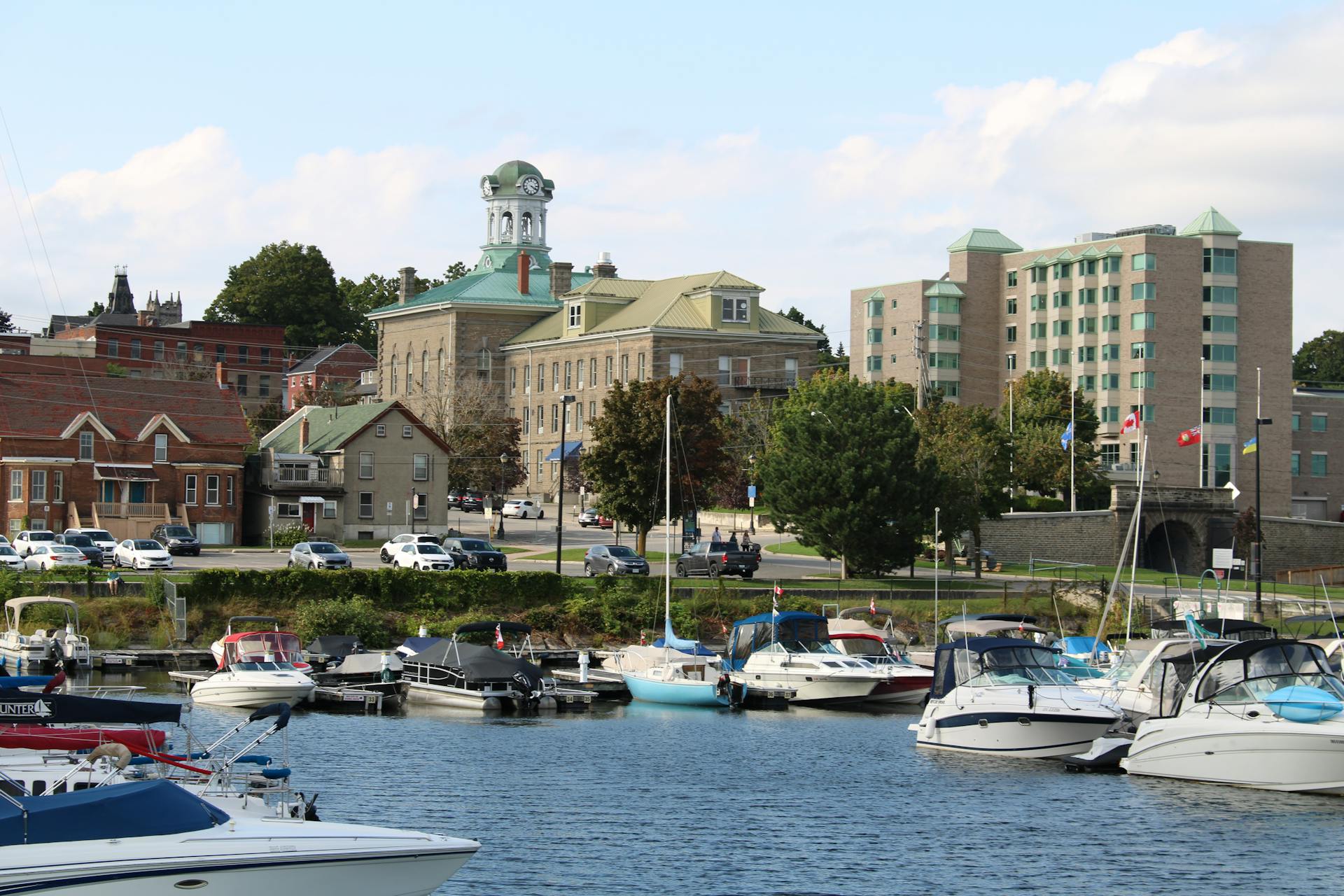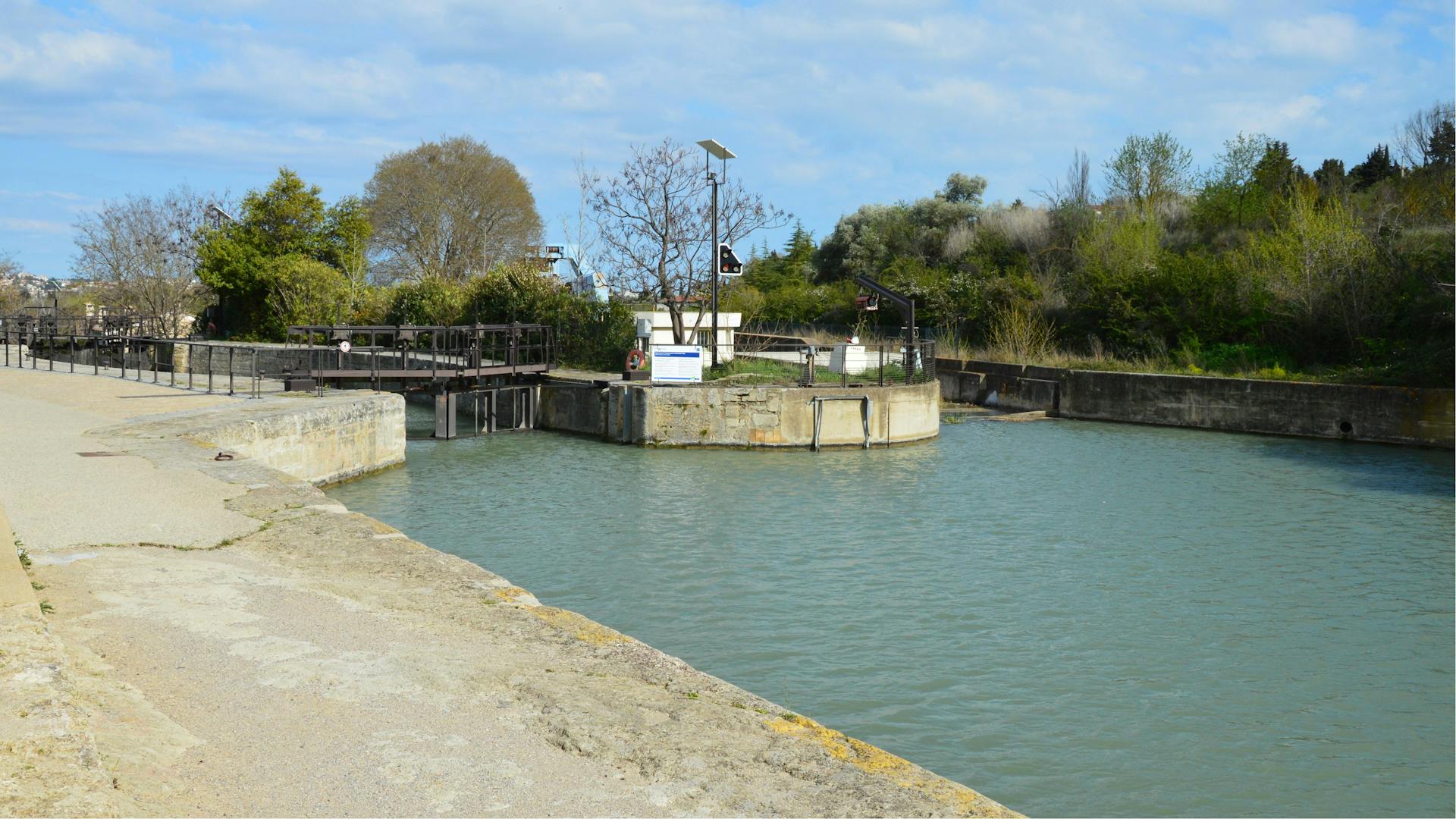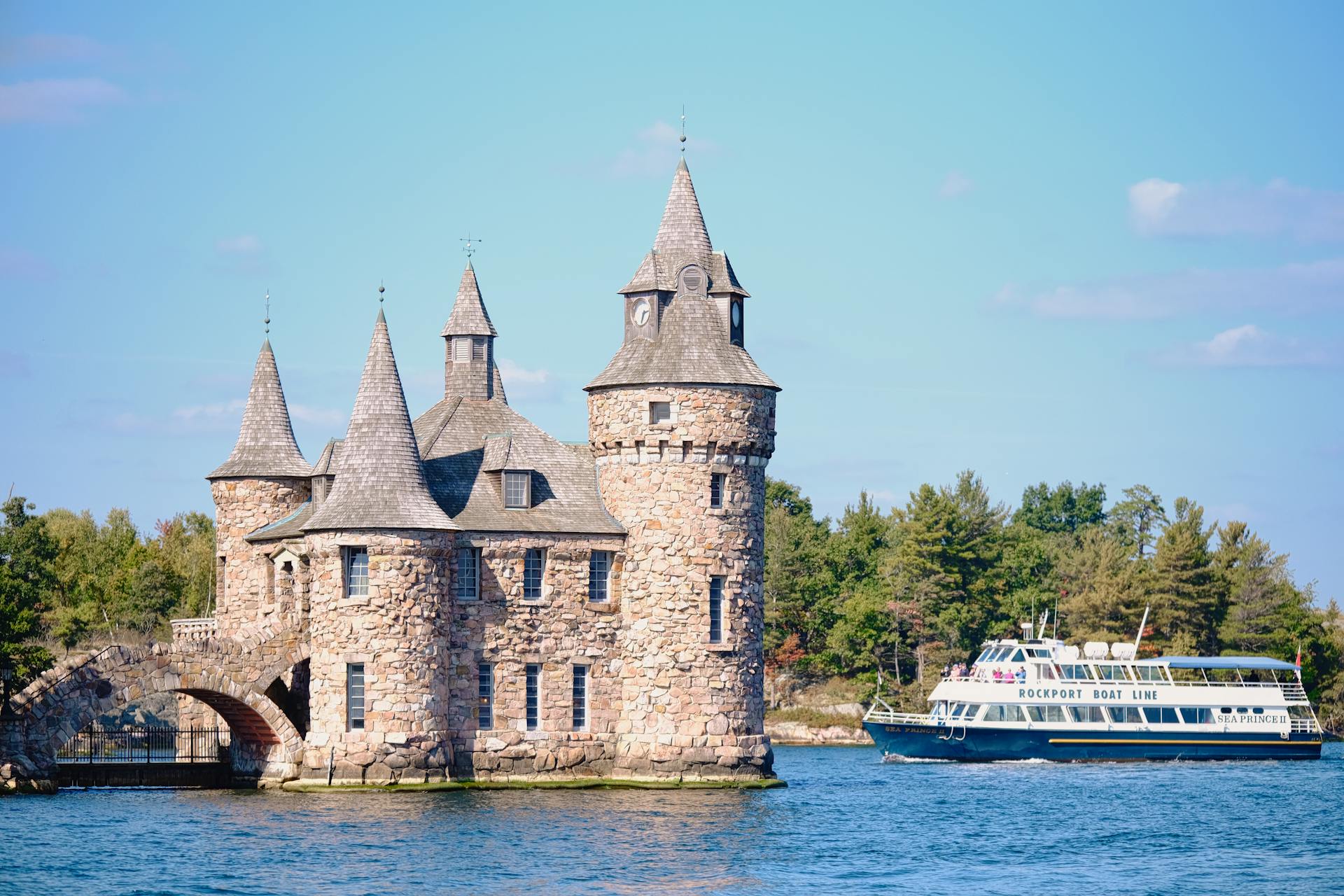
The St Lawrence Seaway in Quebec is a treasure trove of natural wonders. Spanning over 1,900 kilometers, the seaway is home to a diverse range of ecosystems, including the world's largest freshwater delta.
The seaway's unique geography creates a fascinating environment, where freshwater and saltwater mix, supporting an incredible array of marine life. The Gulf of St Lawrence, located at the mouth of the seaway, is a key habitat for many species of whales, including the endangered North Atlantic right whale.
From the rugged coastlines to the vast wetlands, the St Lawrence Seaway is a haven for outdoor enthusiasts and nature lovers alike. With numerous parks and protected areas along the seaway, visitors can explore the region's natural beauty and get up close with its incredible wildlife.
Navigation and Infrastructure
The St. Lawrence Seaway is a vital transportation route that connects the Great Lakes to the Atlantic Ocean, and its navigation and infrastructure are key to its success.
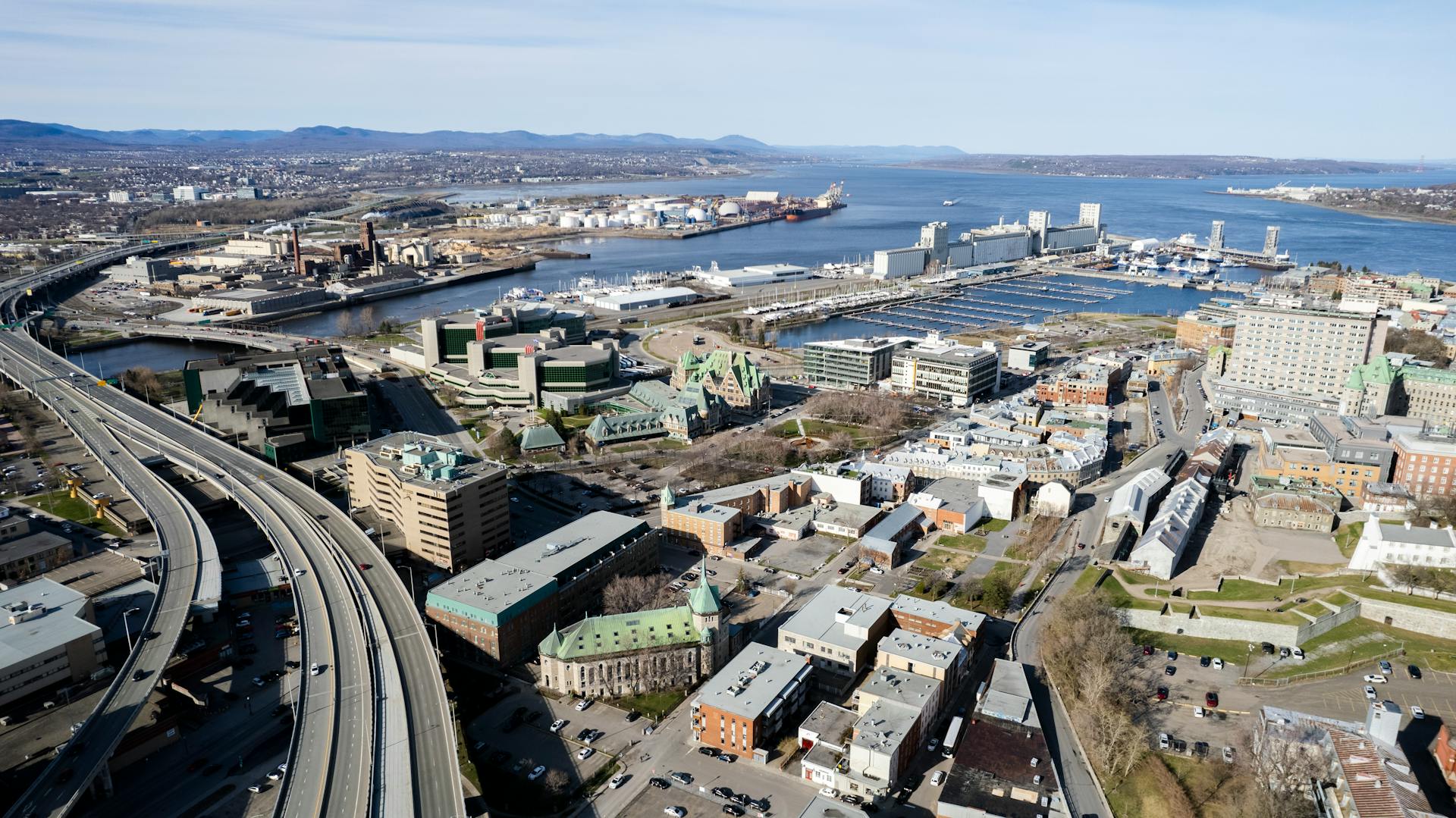
The Seaway's navigation system includes a series of locks and canals that allow ships to pass from the Great Lakes to the ocean, with the most notable being the Saint-Lambert Lock in Quebec.
This lock is a marvel of engineering, with a lift of 21 meters over a distance of 375 meters, making it one of the longest locks in the world.
The Seaway's infrastructure also includes several ports and terminals, such as the Port of Montreal, which is one of the busiest ports in Canada.
The Port of Montreal handles over 1.2 million containers per year, making it a critical hub for international trade.
The Seaway's navigation system is also equipped with advanced technology, including navigation aids and communication systems, to ensure safe and efficient passage for ships.
These systems include the use of radar, lighthouses, and buoys to guide ships through the Seaway's complex waterways.
The Seaway's infrastructure is maintained by a partnership between the Canadian and American governments, as well as private industry, to ensure its continued operation and improvement.
This partnership has allowed for significant investments in the Seaway's infrastructure, including the construction of new locks and the upgrading of existing facilities.
The result is a safe and efficient transportation route that supports the economic growth and development of the region.
International Trade & Tourism
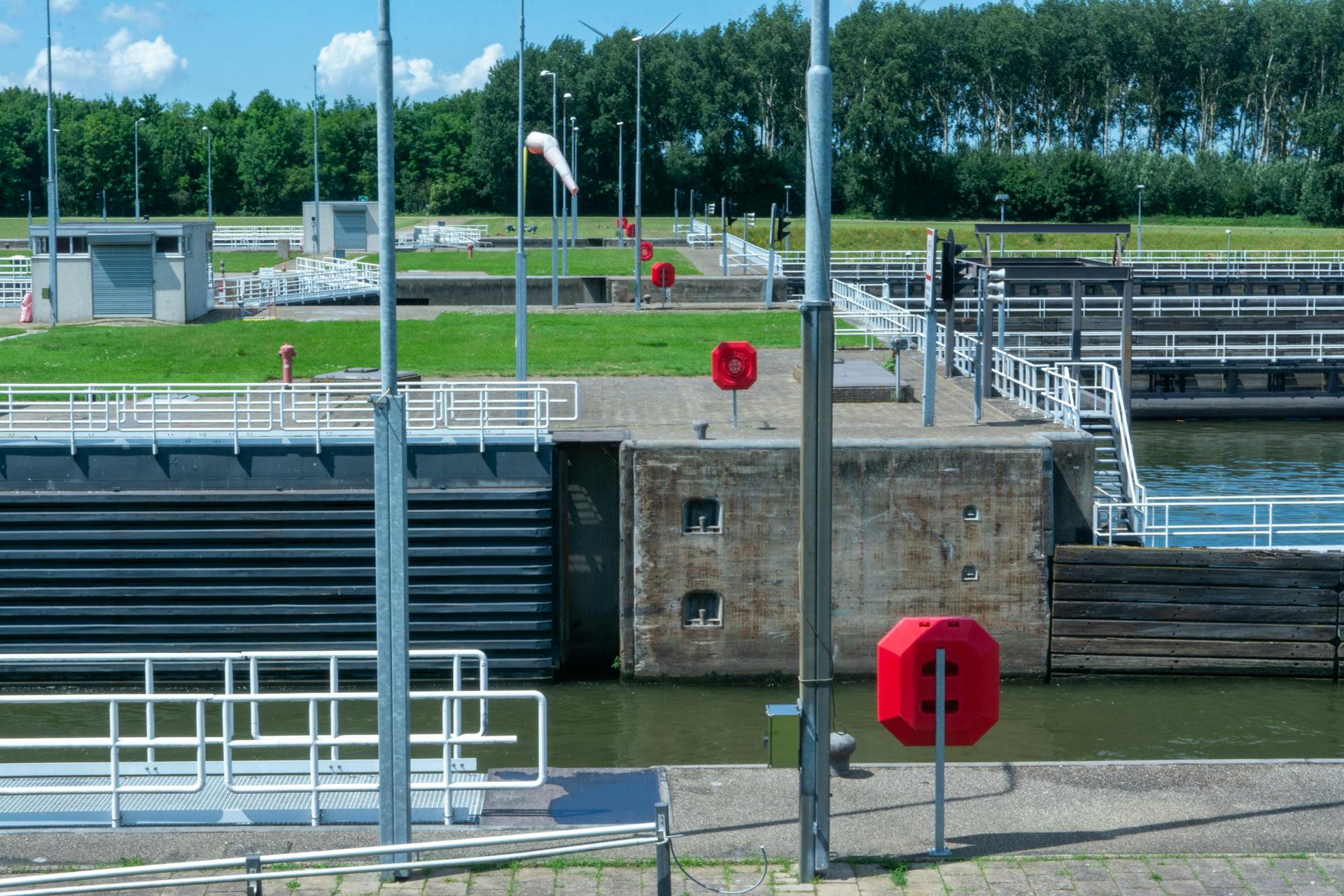
The St. Lawrence Seaway is a vital artery for international trade, handling 40-50 million annual tonnes of cargo. This cargo is mostly made up of bulk commodities, which account for about 90% of annual cargo tonnage.
The seaway is used by ships from around the world, with 50% of cargo traveling to and from international ports in Europe, the Middle East, and Africa. Polsteam, a Polish shipping company, maintains a fleet of dry-bulk vessels that transit the seaway every two weeks from the Dutch town of IJmuiden to Duluth, Minnesota.
Fednav Group, a private international dry-bulk only ocean transportation group, has routes between the Port of Antwerp and Sorel, Quebec, even in wintertime. World Shipping Inc., a privately owned global logistics operation, also uses the seaway for its international trade.
Some of the major users of the seaway include:
- Polsteam
- Fednav Group
- World Shipping Inc.
- Canfornav
- American Steamship Company
- Rand Logistics
- McKeil Marine
- Groupe Desgagnés
- Arrimage Quebec
The seaway is also an important route for Ontario grain exports to overseas markets, with the Port of Montreal being a key location for these exports. The seaway's fees are publicly known and were limited to an increase of 3% in 2013.
Natural Beauty
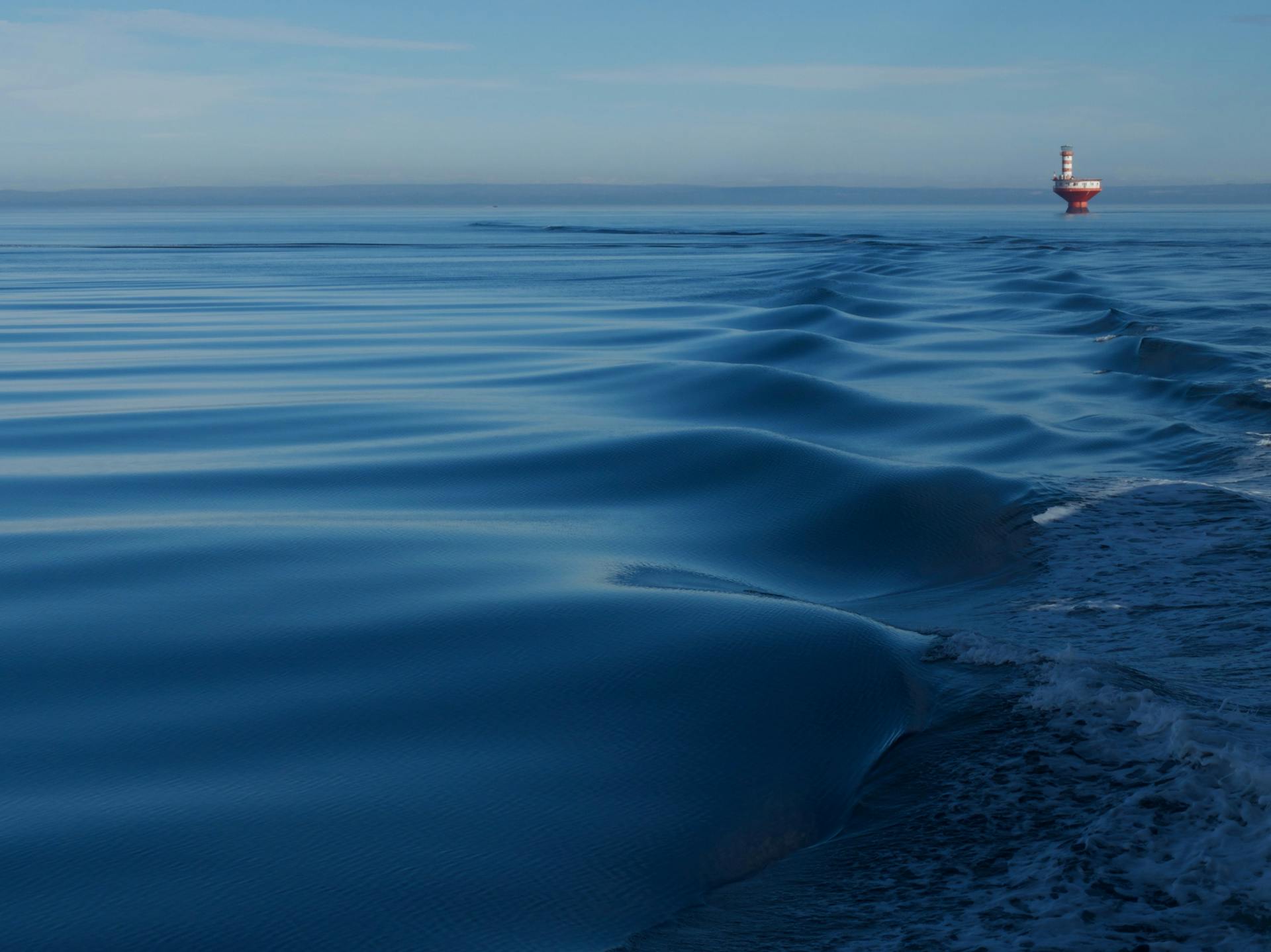
The St. Lawrence Seaway in Quebec is a nature lover's paradise. The scenery is a feast for the eyes, making it a must-see destination for anyone traveling along the river.
The St. Lawrence River offers breathtaking views from both sides, making it a unique experience for travelers. The river's vast expanse stretches out as far as the eye can see, creating a sense of awe and wonder.
Beauty on Horizon
Exploring the natural beauty of Québec's coastline is a treat for the eyes. The St. Lawrence River offers a feast for the eyes with its magnificent scenery.
Traveling along the St. Lawrence River is a great way to experience the beauty of the area. The river's shoreline is dotted with stunning landscapes and clifftop lookouts.
Coastal national parks in Québec are renowned for their breathtaking views over the water. These parks are a must-visit for anyone who loves the ocean.
Islands and Archipelagos
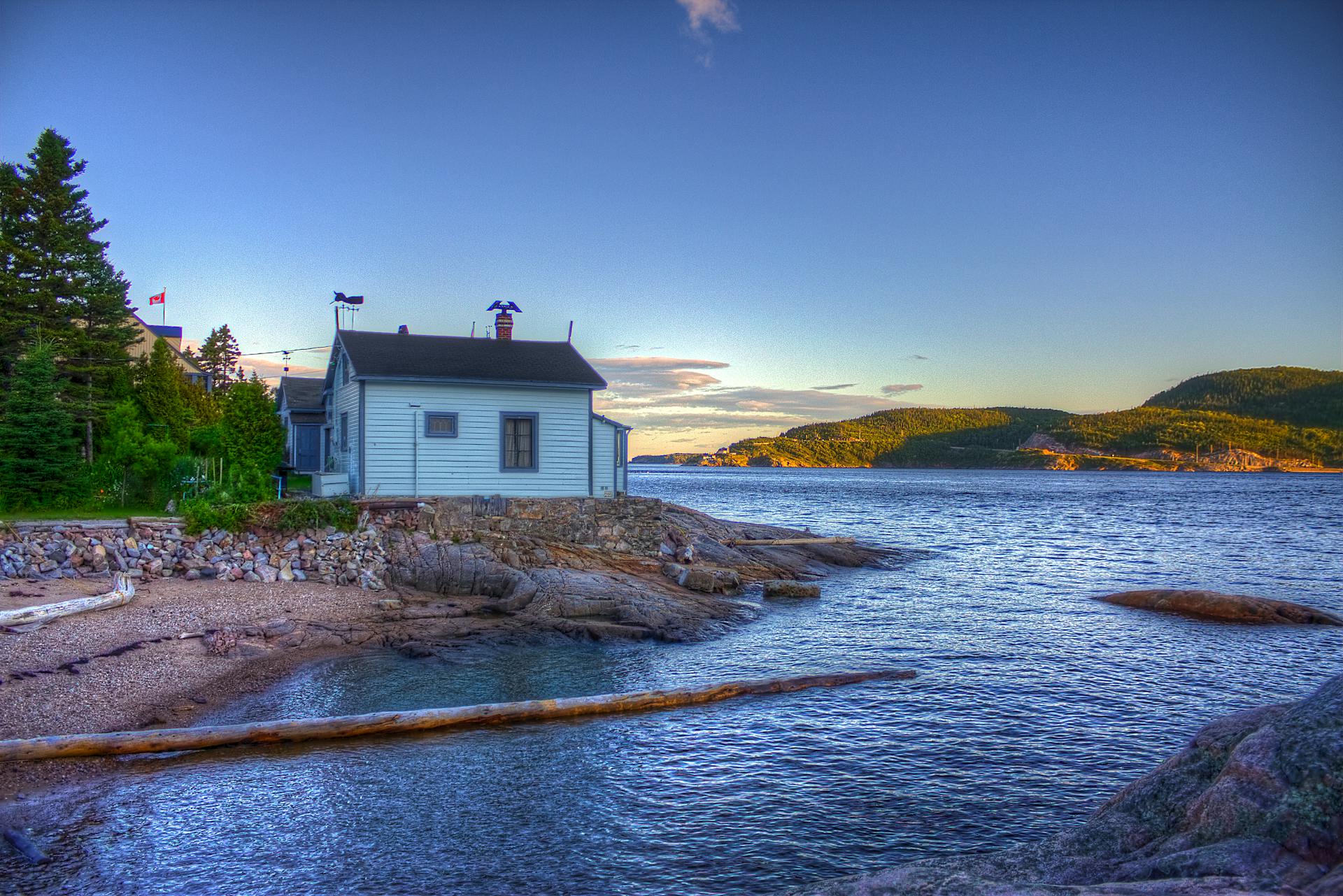
The St. Lawrence is dotted with islands and archipelagos that are a treasure trove of natural beauty. Each of these unique destinations has its own distinct personality, bearing witness to the region's rich history.
A string of islands and islets, the Mingan Archipelago National Park Reserve features colossal limestone monoliths sculpted by the wind and the sea. To truly appreciate these natural wonders, it's best to take a more relaxed pace and savor every stopover.
The St. Lawrence is home to a diverse array of wildlife, including species that call the islands and archipelagos home. Unique wildlife, spectacular scenery, and authentic cuisine can be experienced firsthand by taking a cruise through the region.
For anyone journeying along either side of the St. Lawrence, the magnificent scenery is a feast for the eyes. The islands and archipelagos are a must-see destination for anyone looking to experience the region's natural beauty.
Wildlife and Environment
The St. Lawrence Seaway plays a significant role in supporting the local environment. Smarter Seafood menus are available to guide customers in choosing local fish and seafood, helping to protect the St. Lawrence marine environment.
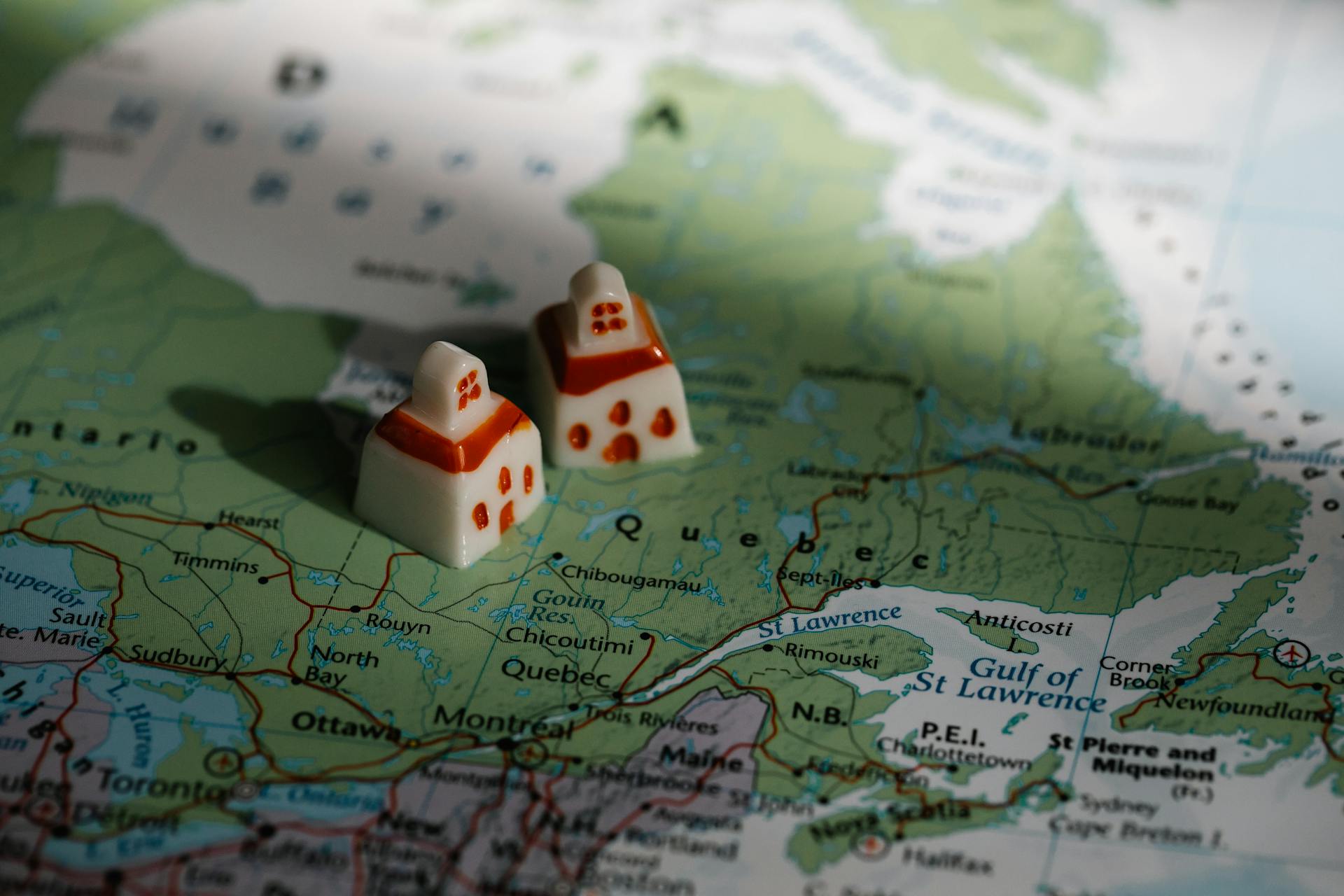
The St. Lawrence River is home to a variety of wildlife, including marine mammals and seabirds. Discover Québec's diverse marine life and take in the breathtaking scenery.
Unfortunately, the operation of the seaway has had some negative environmental impacts. The introduction of invasive species, such as the zebra mussel, has been particularly damaging to the Great Lakes and related waterways.
Ecology
The St. Lawrence River and its surrounding area have been impacted by human activities. The creation of Lake St. Lawrence behind a dam in 1958 led to the flooding of six villages and three hamlets in Ontario, now known as The Lost Villages.
The operation of the seaway has introduced numerous invasive species of aquatic animals into the Great Lakes Basin. The zebra mussel has been particularly damaging in the Great Lakes and related rivers.
Invasive species and artificial water level controls have had a negative impact on recreational fishing. The seaway's water level controls have also affected the natural habitats of native species.
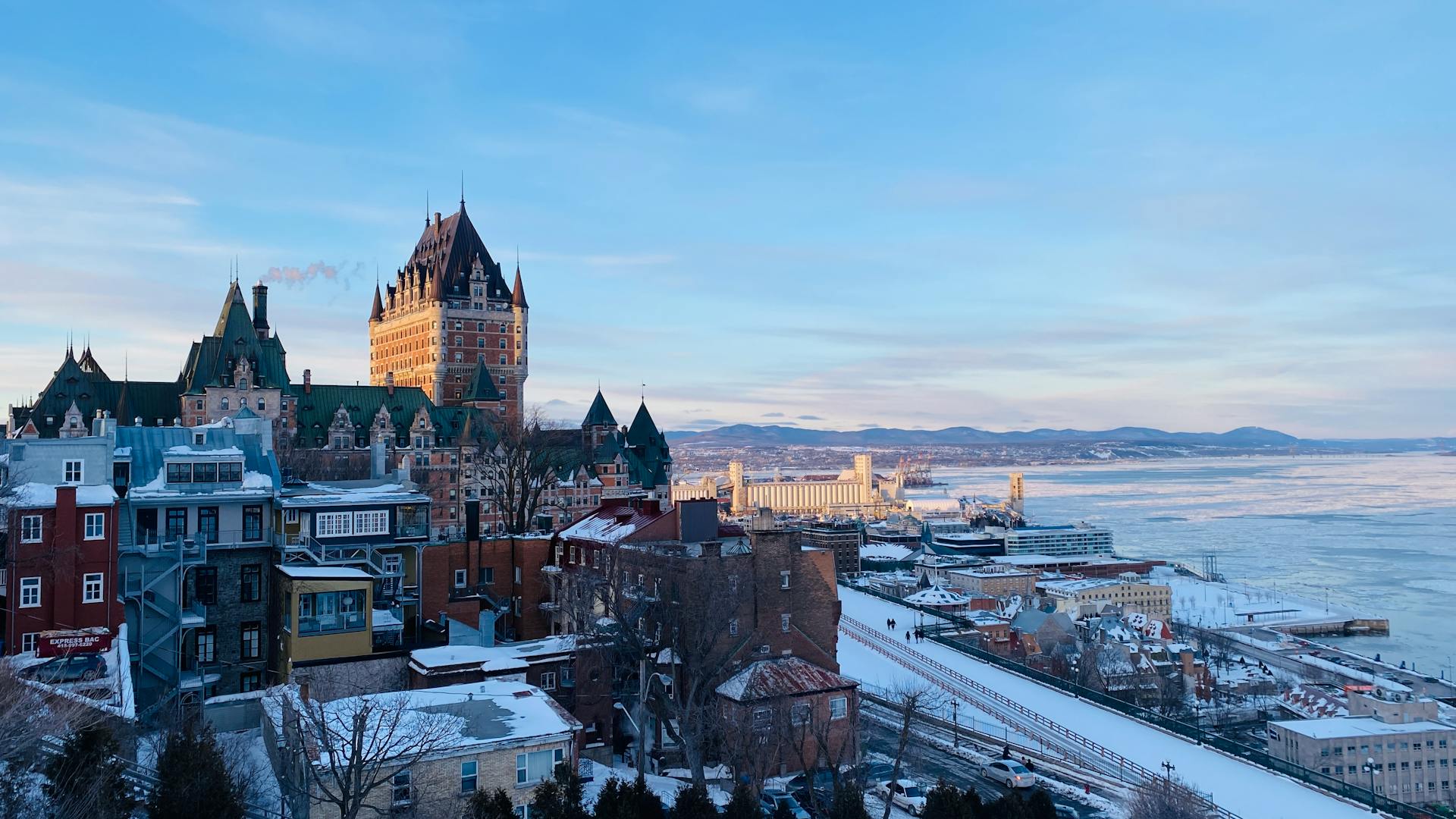
The seaway provides opportunities for outdoor recreation, such as boating, camping, and scuba diving. The Old Power House near Lock 23 is a popular scuba diving site, covered in barnacles and home to an abundance of underwater life.
The region offers a number of diveable shipwrecks within recreational scuba limits, shallower than 130 ft. The water temperature can be as warm as 75 °F during the mid- to late-summer months, making it suitable for scuba diving.
A major environmental incident occurred on July 12, 2010, when the ship Richelieu ran aground near the Côte-Sainte-Catherine lock, spilling an estimated 200 tonnes of diesel fuel.
Discover the Wildlife
Québec is home to an incredible array of marine mammals and seabirds. You can spot these amazing creatures in their natural habitat.
The region's marine mammals include whales, dolphins, and seals. These incredible animals can be seen up close in the waters off Québec's coast.
The scenery in Québec is truly breathtaking, with towering cliffs, rocky shores, and pristine beaches. You'll be captivated by the stunning views and won't want to leave.
Frequently Asked Questions
Where is the best place to see ships on St. Lawrence Seaway?
Best spot to witness ship traffic on the St. Lawrence Seaway: The lower end of the Iroquois Lock
How many locks are on the St. Lawrence River?
The St. Lawrence Seaway has a total of 15 locks, consisting of 13 in Canada and 2 in the United States. This impressive engineering feat spans from Montreal to mid-Lake Erie.
Sources
- https://en.wikipedia.org/wiki/St._Lawrence_Seaway
- https://www.greatlakescruises.com/saint-lawrence-seaway-cruises.html
- https://www.truenorthsailingcharters.com/post/discovering-the-saint-lawrence-seaway-a-gateway-to-north-america
- https://www.bonjourquebec.com/en-us/explore/experiences/experience-the-st-lawrence
- https://www.britannica.com/topic/Saint-Lawrence-Seaway
Featured Images: pexels.com
